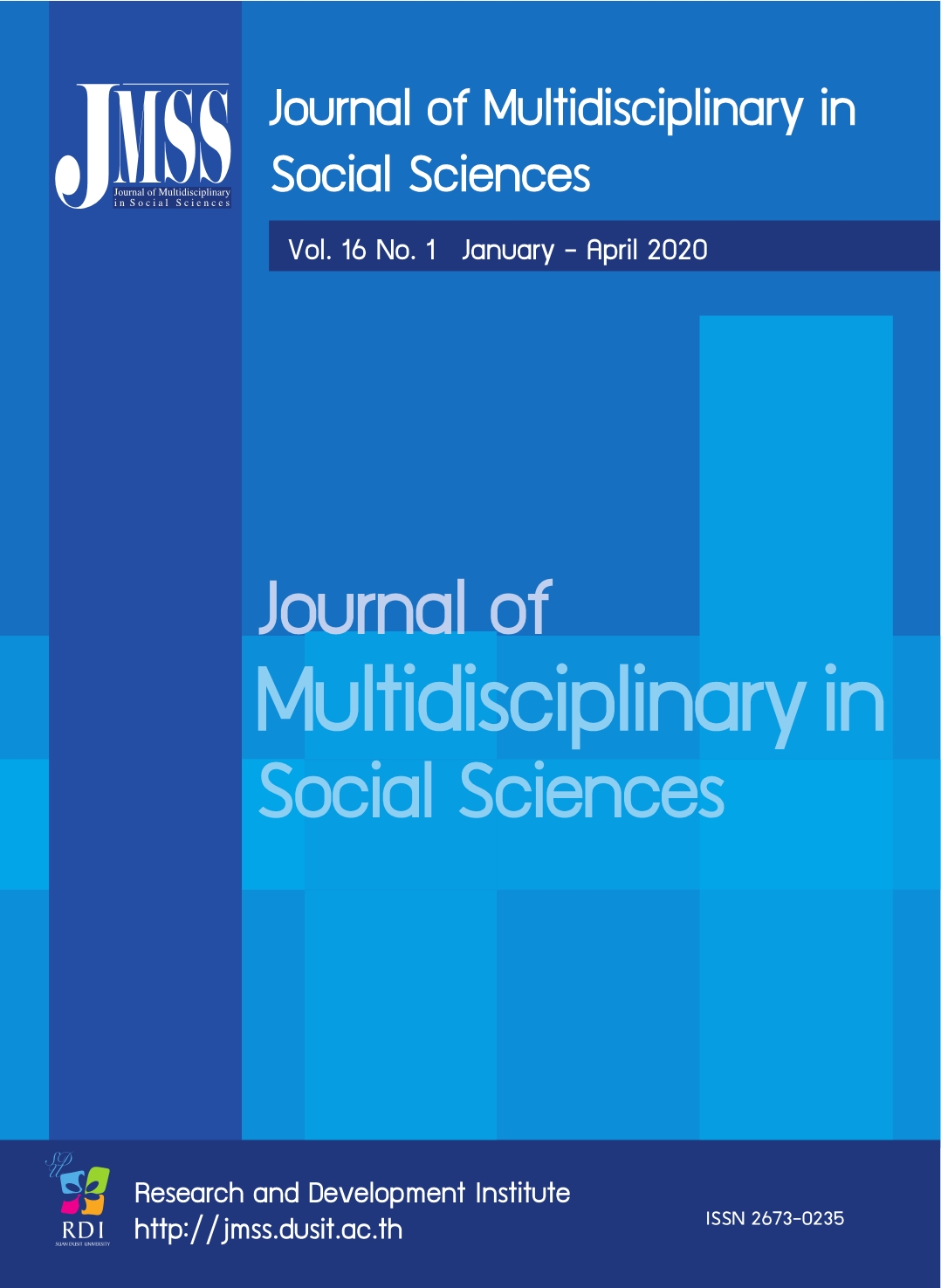Values and Potentials of Living Heritage Sites: Case Studies of Buddhist Stupa in Thailand for Listing as UNESCO World Heritage Sites
Keywords:
Cultural heritage, World heritage, Buddhist stupas, World heritage list nominationAbstract
Thailand has various tourist attractions with both natural and cultural heritage sites, along with five properties on the World Heritage List. In order to explore the nomination strategies to nominate properties to UNESCO’s World Heritage List, this case study focuses on four Buddhist stupas in four eminent cases in four regions of Thailand which are registered as historic sites by the Fine Arts Department of Thailand: 1. Wat Phra That Hariphunchai Woramahawihan in Lamphun Province; 2. Wat Phra That Phanom Woramahawihan in Nakhon Phanom Province; 3. Wat Phra Pathommachedi Ratcha Woramahawihan in Nakhon Pathom Province; and 4. Wat Phra Mahathat Woramahawihan in Nakhon Si Thammarat Province. This study applies a combination of qualitative methods in assessing cultural heritage significance, authenticity, and integrity of the sites, including a SWOT (Strengths, Weaknesses, Opportunities, Threats) analysis.
The objectives of this research are: 1) To contribute to the body of knowledge of cultural heritage significance of the Buddhist stupas in Thailand, 2) To analyze the potential significance of cultural heritage proposed to join the World Heritage List, and 3) To identify strategies to control, manage and deal with any threats for nomination to the World Heritage List effectively and appropriately. Research reveals that these Buddhist stupas have potential to be nominated as a serial nomination of cultural heritage on the World Heritage List because of cultural values for national and international levels such as historical value, aesthetic value, social value, spiritual value and the enduring respect of Thai Buddhists to Buddhism through cultural heritage practices and traditions over time. The results of this paper also offer recommendations of a new strategy for Thailand in the process of nomination.
References
Aksrondit, T. (2002). Chuthat or Revering the Relic of the Buddha : Context and Symbolism of Phrathat(Stupa) in Southeast Asia Sub Region, Case Study of Belietfs in Lanna Regarding Stupas as Pilgrime Centers and the Twelve-Year Cycle (Master's Thesis). Chiangmai: Chiangmai University
Board, N. I. (2000). Thailand into the 2000’s. Bangkok: Office of the Prime Minister. Central Intelligence Agency . (2019). East Asia/Souaxtheast Asia: THAILAND. Retrieved November 12, 2019, from https://www.cia.gov/library/publications/the-worldfactbook/geos/th.html.
Chuvicien, P. (2012). hamaha cedi haeng sayam. Bangkok: Museum Press.
Fine Arts Department. (2000). com cedi. Bangkok: Divions of Literature and History, Fine Arts Department.
Gürel, E. (2017). SWOT Analysis : a Theoretical Review. The Journal of International Social Research, Uluslararası Sosyal Araştırmalar Dergisi, 10(51), 994-1006.
ICCROM. (2003). Conservation of Living Religious Heritage. Retrieved October 22, 2019, from https://www.iccrom.org/sites/default/files/ICCROM_ICS03_ReligiousHeritage_en.pdf
Kirdsiri, K., Muangyai, N., & Jitsuthiyan, S. (2013). Competency, Guideline for Cultural Heritage Management and Cultral Landscapes in Northern Thailand as to be Nominated for World Heritage List. Journal of NAJUA, Architeccture Design and Build Environment, 27,(2) 170-201.
Pew Research Center. (2015). The Future of World Religions: Population Growth Projections, 2010-2050. Retrieved April 2, 2015, from http://assets.pewresearch.org/wp-content/uploads/sites/11/2015/03/PF_15.04.02_ProjectionsFullReport.pdf
Saisingha, S. (2012). jaeh dee phra phoo thoht ruup huup dtaaem sim sin bpa ee saan lae laao. Bangkok: Museum Press. Suthitham, S. (2010). phraborommathat samkhan lae prapheni khuen phrathat lan na. Bangkok: Nakornsarn. T
he Conservation and Development of Rattanakosin and the Old Town Committee. (2001). Announced the Conservation and Development of Rattanakosin and the Old Town Committee, Announcement of Nakhon Si Thammarat Old Town B.E.2553. Office of Natural Resources and Environment Policy and Planning
UNESCO. (1972). Convention Concerning the Protection of the World Cultural and Natural Heritage. Paper presented at the General Conference at its seventeenth session, Paris.
UNESCO. (2011). Longobards in Italy. Places of the Power (568-774 A.D.). Retrieved June 12, 2016, from https://whc.unesco.org/en/list/1318/
UNESCO. (2014). Bursa and Cumalıkızık: the Birth of the Ottoman Empire. Retrieved June 12, 2016, from https://whc.unesco.org/en/list/1452/
UNESCO. (n.d.). Guidelines for the Preparation of Serial Nominations to the World Heritage List. Retrieved December 10, 2019, from http://whc.unesco.org/archive/serial-noms.htm
UNESCO, ICCROM, ICOMOS & IUCN. (2011). Preparing World Heritage Nominations (Second ed.). Paris: United Nations Educational, Scientific and Cultural Organization.
Vessoontorntep, S., & Dankittikul, C. (2014). Trends of Cultural Landscape Studies in Thailand. Journal of Multidisciplinary in Social Sciences, 10(3), 143-164.
Downloads
Published
How to Cite
Issue
Section
License

This work is licensed under a Creative Commons Attribution-NonCommercial-NoDerivatives 4.0 International License.








